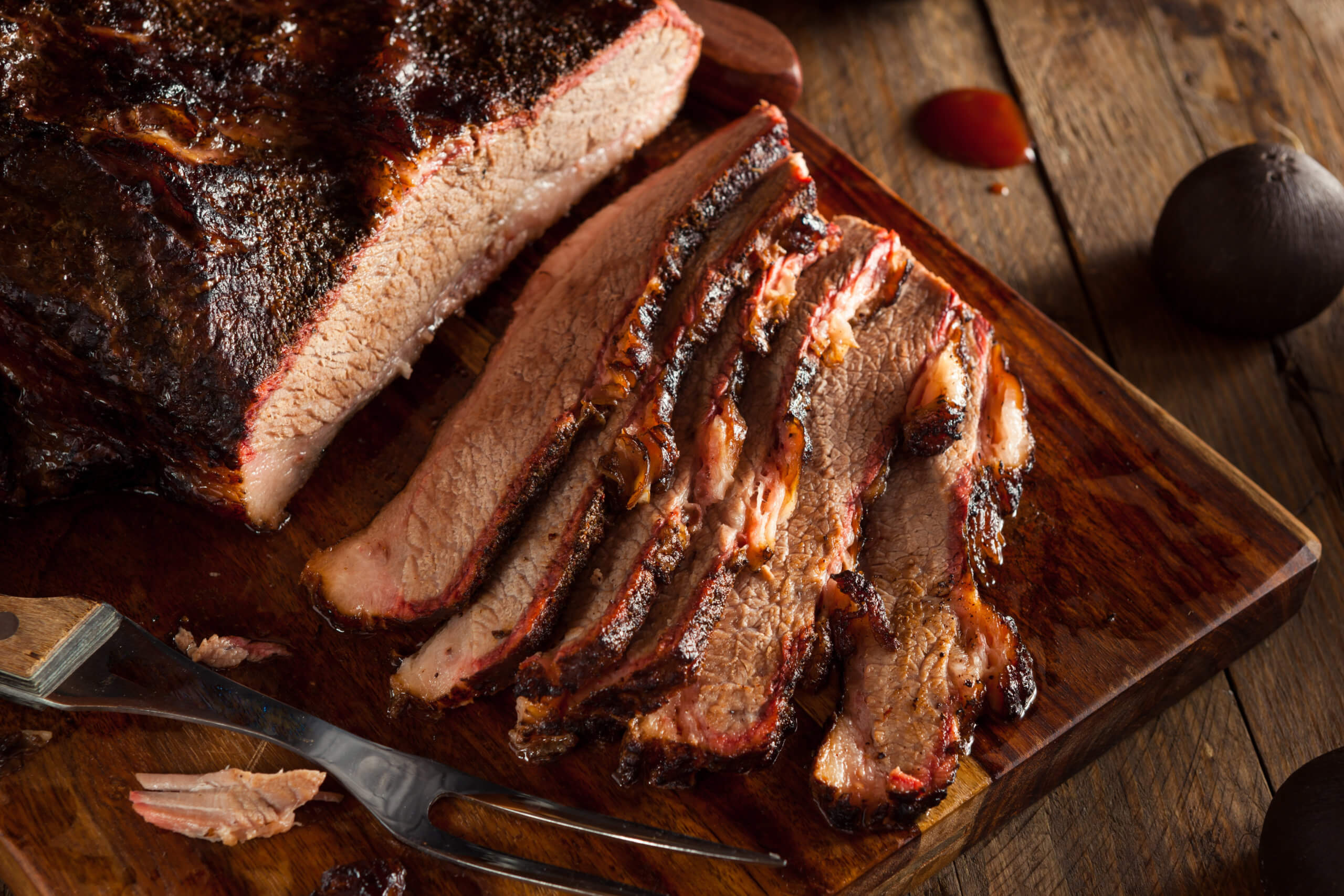
Barbeque is as much a part of American culture as apple pie and lazy Sundays watching football. But along with its many spellings, “barbecue” has a wide array of meanings. To some, it means burgers and hot dogs on a charcoal grill; to others, if it isn’t smoked, it isn’t BBQ. Some think of BBQ as an Aussie throwing shrimp on the barbie; still others feel that anything with BBQ sauce or bold seasoning is BBQ. It can be confusing, so we thought we’d make a guide to our favorite culinary pastime!
First, let’s dive into a short history of American ‘que! Around 500 years ago, when the Spanish were sailing around the Americas, they came along Caribbean tribes that cooked meat on a grate over a live fire: barbacoa. This method made its way through the colonizing empires of the time, and each colony had a different take on it. One of those colonies was America, where it eventually became popular among the Founding Fathers — so BBQ really is woven into America’s fabric. While the method of cooking is limited to either grilling or smoking, people in different regions of the U.S. used what was available to them to develop their own local favorites, each defining what BBQ was to them.
The method of cooking BBQ today that is most similar to the original barbacoa is grilling. This involves cooking food, typically meat, over high, direct heat for a short time — think steaks, burgers or hot dogs with a trademark dad holding a beer and wearing a “kiss the cook” apron. Grilling can be done over seasoned wood, charcoal, gas or infrared, each with its own hotly debated pros and cons. Wood imparts great flavor but provides inconsistent heat and flare-ups; charcoal also adds flavor and has more consistent heat, but can have flare-ups; gas gives fast control over the heat level with a low risk of flare-ups, but can give an unfavorable taste to the food; infrared is great for searing, with ultimate control over heat with no risk of flare-ups, but it doesn’t add the trademark smoky wood flavor. Depending on where you are, you may be accused of blasphemy for calling any of these “barbeque” instead of simply “grilling.”
Where the pit masters come in is with smoking, or using smoke to deeply flavor food. Smoking doesn’t only vary in heat source, like grilling, but also in form, from underground ovens and homemade oil drum smokers to expensive, wifi-enabled pellet smokers. As with everything in the BBQ world, the best type of smoking is hotly contested, but can be broken down into three general categories: vertical, offset and pit. The categories are just the start, so here is a quick breakdown of the general options:
Fuel, seasonings and sauces are the flavor makers in the BBQ world. Even more so than with grilling, fuel choice can have a huge influence on the flavors of smoked foods. Different woods create different amounts of heat, varying smoke densities, and flavors spanning sweet and fruity to bold and earthy. Instead of having one signature wood blend for everything, wood choice is an important part of individual recipes and is selected to enhance attributes of the food.
Dry rubs are often highly secretive recipes of spices rubbed on meat before smoking or grilling. In regions where meat is served without sauce, like Texas, the dry rub and wood choices make up the flavor of the food, so extra emphasis is placed on these.
Sauces are another regionally specific part of BBQ, with wide variances in consistency, color and flavor. BBQ sauces can be white, yellow, red, or brown to nearly black. Flavor profiles can vary wildly and can be spicy, sweet, smoky, peppery or acidic. Some regions add thick sauces just before food is finished cooking; others mop on liquid sauces throughout the cooking process. These are the magical elements from which pit masters conjure one-of-a-kind BBQ throughout the country!
So what is BBQ? If you ask 10 pit masters, you’ll hear at least a dozen answers. To us, it’s whatever you’d like it to be! So many foods taste better off the grill, whether its burgers, clams, kielbasa or eggplant, while plank salmon, kalua pork, brisket and more burst with flavor when smoked. Bottom line, BBQ is all about bringing people together for the love of food, so whether you love Carolina pulled pork, Texas beef ribs or Santa Maria tri-tip, let’s eat!

It's never too early to start. Give us a shout to find out how we can deliver the most scrumptious picnic catering in town and help you throw an epic event from start to finish.